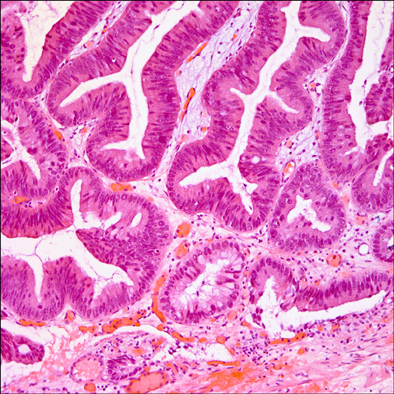Korean J Urol.
2012 Jun;53(6):438-440.
Synchronous Urothelial Carcinoma of the Bladder and Urachal Adenoma with Subsequent Malignant Transformation
- Affiliations
-
- 1Department of Urology, Monash Medical Centre, Southern Health, Victoria, Australia. dpan1111@yahoo.com.au
- 2Cabrini Health, Malvern, Melbourne, Australia.
Abstract
- Malignant transformation of urachal adenoma is exceedingly rare, with intestinal metaplasia as the most common contributing mechanism. It is recommended that a urachal adenoma be regarded as a pre-malignant condition and be subject to endoscopic surveillance. A local en block excision of the tumor mass with urachalectomy and umbilectomy results in possible long-term survival. The median survival after platinum-based chemotherapy is limited for patients with extravesical disease. Here we report a case of synchronous urothelial carcinoma of the bladder and urachal adenoma that transformed into adenocarcinoma.
MeSH Terms
Figure
Reference
-
1. Sheldon CA, Clayman RV, Gonzalez R, Williams RD, Fraley EE. Malignant urachal lesions. J Urol. 1984. 131:1–8.2. Paras FA Jr, Maclennan GT. Urachal adenocarcinoma. J Urol. 2008. 180:720.3. Ashley RA, Inman BA, Sebo TJ, Leibovich BC, Blute ML, Kwon ED, et al. Urachal carcinoma: clinicopathologic features and long-term outcomes of an aggressive malignancy. Cancer. 2006. 107:712–720.4. Molina JR, Quevedo JF, Furth AF, Richardson RL, Zincke H, Burch PA. Predictors of survival from urachal cancer: a Mayo Clinic study of 49 cases. Cancer. 2007. 110:2434–2440.5. Assor D. A villous tumor of the bladder. J Urol. 1978. 119:287–288.6. Lucas DR, Lawrence WD, McDevitt WJ. Mucinous papillary adenocarcinoma of the bladder arising within villous adenoma of urachal remnants. An immuno-histochemical and ultrastructural study. J Urol Pathol. 1994. 2:173–182.7. Mazzucchelli R, Scarpelli M, Montironi R. Mucinous adenocarcinoma with superficial stromal invasion and villous adenoma of urachal remnants: a case report. J Clin Pathol. 2003. 56:465–467.8. Herr HW, Bochner BH, Sharp D, Dalbagni G, Reuter VE. Urachal carcinoma: contemporary surgical outcomes. J Urol. 2007. 178:74–78.9. Stenzl A, Cowan NC, De Santis M, Jakse G, Kuczyk MA, Merseburger AS, et al. The updated EAU guidelines on muscle-invasive and metastatic bladder cancer. Eur Urol. 2009. 55:815–825.
- Full Text Links
- Actions
-
Cited
- CITED
-
- Close
- Share
- Similar articles
-
- Sigmoid-Urachal-Vesical Fistula Associated with Urothelial Carcinoma in an Adult Male: Case Report
- Risk Factors for Subsequent Bladder Tumor in Upper Tract Urothelial Tumor
- Adenocarcinoma of the urinary bladder: CT features
- Adenocarcinoma of the Urinary Bladder: Report of Three Cases
- Urothelial Carcinoma of the Renal Pelvis with Synchronous Ipsilateral Collecting Duct Carcinoma: Two Case Reports




